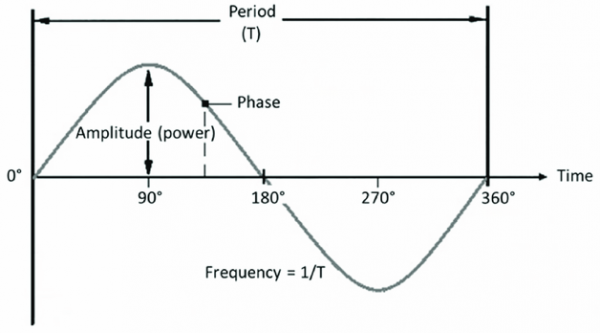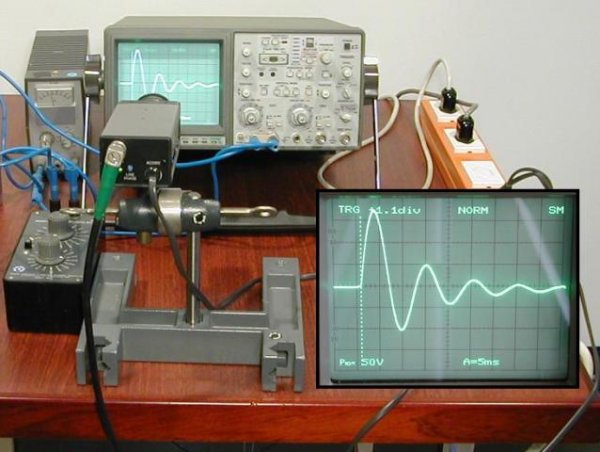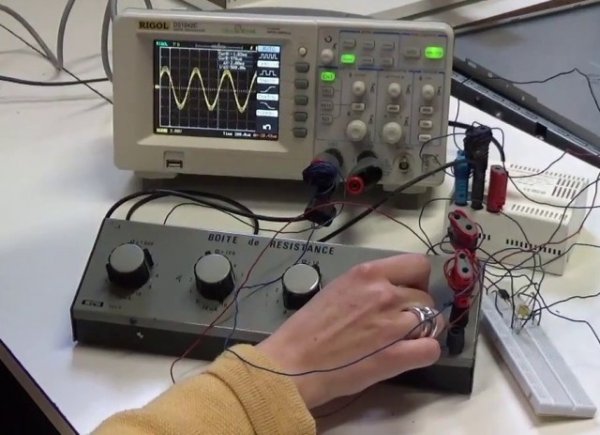Electric oscillations: types and characteristics, amplitude, frequency and phase of oscillations
Oscillations are processes that repeat themselves repeatedly or roughly repeat themselves at certain intervals. Fluctuating processes are widespread in nature and technology.
In electrical engineering and electronics, they have to deal with a wide variety of types of electrical oscillations, i.e. fluctuations of voltages and currents. in different electrical circuitsas well as mechanical vibrations such as vibrations microphone membranes or speakers.
Vibration characteristics
Oscillations as repetitive processes are characterized, first of all, by the largest deviations reached by the fluctuating value, or vibration amplitude, secondly, the frequency with which repetitions of the same states occur, or frequency of vibration, and thirdly, from what state, what process phase corresponds to the time of the start of the countdown. This latter characteristic of the oscillating process is called the "initial phase" or simply "phase" for short.
Strictly speaking, these concepts are applicable only to certain types of oscillations, namely periodic and, in particular, sinusoidal… The terms: amplitude, frequency and phase are, however, generally applied in the above sense to any vibration in general (see — Basic parameters of AC).
Oscillation characteristics (amplitude, period, frequency and phase):
Types of vibration
Depending on what happens to the amplitude, the oscillations differ:
-
stationary or undamped, whose amplitude does not change over time;
-
amortized, whose amplitude decreases with time;
-
increases, the amplitude of which increases with time;
-
amplitude modulation whose amplitude increases and decreases with time.
Depending on how the oscillations are repeated in time, the oscillations differ:
-
periodic, that is, those in which all states are repeated exactly at certain intervals;
-
approximately periodic, in which all states only approximately repeat themselves, for example, damping or frequency-modulated (ie, oscillations whose frequency constantly changes within certain limits around a certain value).
Look -Free damped and forced oscillations
Depending on the form, oscillations are distinguished:
-
sinusoidal (harmonic) or close to sinusoidal;
-
relaxation, the shape of which is significantly different from sinusoidal.
Finally, according to the origin of the oscillating process, they are distinguished:
-
natural or free oscillations that occurred as a result of a shock in the system (or in general, a violation of the equilibrium of the system);
-
forced, arising as a result of a prolonged external oscillatory action on the system, and self-oscillations occurring in the system in the absence of external influences, due to the ability of the system itself to maintain the oscillatory process in it.
Electrical vibrations — fluctuations in current, voltage, charge, occurring in electric circuits, circuits, lines, etc. The most common type of electrical vibrations are the usual ones alternating electric current, in which the voltage and current in the circuit periodically change. They happen with a frequency of 50 Hz. Such relatively slow oscillations are usually obtained using Alternating current electrical machines.
Fast vibrations are created by special methods, among which in modern technologies they play the biggest role electronic generators.
Depending on the frequency, it is common to divide electrical vibrations into two groups — low frequency, whose frequency is below 15,000 Hz, and high frequency, whose frequency is more than 15,000 Hz. This limit was chosen because vibrations below 15,000 Hz produce the sensation of sound in the human ear, while vibrations above 15,000 Hz cannot be heard by the human ear.
Oscillator systems — systems in which natural oscillations may occur.
Oscillator circuit — a circuit in which natural electrical oscillations can occur if the electrical "equilibrium" is disturbed in it, that is, if initial voltages or currents are created in it.
Chain — a normally closed electrical circuit. However, this term also applies to open circuits, namely antennas. To distinguish between these two types of loops, they are called closed and open, respectively.The term "contour" sometimes has a special meaning. An oscillating circuit is often called simply a «circuit» for brevity.
For natural oscillations to occur in a circuit, it must have capacitance and inductance, not too much resistance. The frequency of natural oscillations in the circuit will depend on the value of the capacitance C and inductance L. The larger the capacitance and inductance involved in the oscillating circuit, the lower the frequency of its natural oscillations (for more details see here — Oscillator circuit).
The frequency of natural vibrations in the circuit is determined approximately by the so-called by Thomson's formula:

Since every circuit has a resistance where energy losses occur and heat is released, then the natural oscillations in the circuit will always be damping. In other words, the oscillating circuit returns to electrical "equilibrium" as a result of a damped oscillatory process.
If the resistance of the circuit is very high, then it is an aperiodic circuit in which no natural oscillations occur. The initial voltages and currents created in such a circuit decay without experiencing oscillations, but monotonically. In other words, when the electrical "equilibrium" is disturbed, such a loop aperiodically (ie without oscillations) returns to the "equilibrium" position.
See also on this topic:
Inductively coupled oscillating circuits
Continuous oscillations and parametric resonance




